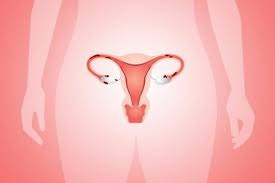Cervical Wounds and treatment methods

Cervical Wounds and treatment methods
Cervical wounds, also known as cervical injuries, refer to any damage or trauma occurring in the cervical region of the spine, which includes the neck and upper back. These injuries can vary in severity, ranging from mild strains to severe fractures, and they can have a significant impact on a person’s overall health and mobility. Understanding the causes, symptoms, and appropriate treatment of cervical wounds is essential for early diagnosis and effective management.

Cervical Wounds and treatment methods
Causes of Cervical Wounds
Over-the-counter pain relievers and anti-inflammatory medications may be prescribed to alleviate pain and inflammation.
4. Heat and Cold Therapy:
Applying heat or cold packs to the affected area can help reduce pain and inflammation.
5. Surgica1. Accidents and Trauma:
Cervical wounds often result from accidents, such as motor vehicle collisions, falls from heights, or sports-related injuries. The forceful impact on the neck can lead to fractures or dislocations of the cervical vertebrae.
2. Sports Injuries:
Athletes engaged in high-impact or contact sports are at risk of cervical wounds due to sudden and forceful movements that can strain or damage the neck structures.
3. Repetitive Strain:
Poor posture and repetitive motions can cause strain on the cervical spine over time, leading to conditions like cervical spondylosis or herniated discs.
4. Age-related Degeneration:
As individuals age, the cervical spine undergoes natural wear and tear, resulting in conditions like osteoarthritis or spinal stenosis, which may lead to cervical wounds in some cases.
Symptoms of Cervical Wounds:
1. Neck Pain and Stiffness:
One of the most common symptoms of cervical wounds is persistent neck pain and stiffness, which can range from mild discomfort to severe agony.
2. Limited Range of Motion:
Patients with cervical wounds may experience restricted movement in the neck, making it difficult to turn or tilt the head.
3. Numbness or Weakness:
Damage to the cervical nerves can cause numbness, tingling sensations, or weakness in the arms, hands, or fingers.
4. Headaches:
Cervical injuries can trigger frequent headaches, especially at the base of the skull.
5. Muscle Spasms:
The muscles surrounding the injured area may go into spasm as a protective mechanism.
Treatment of Cervical Wounds:
1. Rest and Immobilization:
Mild cervical injuries can often be managed with rest and avoiding activities that exacerbate the pain. Immobilization using a neck brace or cervical collar may be recommended to support the injured area during the healing process.
2. Physical Therapy:
Physiotherapy plays a crucial role in the recovery of cervical wounds. Therapists may use various techniques to reduce pain, improve range of motion, and strengthen the neck muscles.
3. Ml Intervention
In severe cases of cervical wounds, surgical intervention may be required to stabilize the spine, decompress nerves, or repair fractured vertebrae.
Conclusion:
Cervical wounds can have a profound impact on an individual’s quality of life, affecting their ability to perform daily tasks and participate in activities they once enjoyed. Understanding the causes, recognizing the symptoms, and seeking appropriate treatment early on can significantly improve the prognosis and long-term outcome. If you suspect a cervical injury, it’s essential to consult a healthcare professional for a thorough evaluation and personalized treatment plan.
Rest and Immobilization
Rest is a crucial aspect of the initial treatment for cervical wounds. Avoiding activities that strain the neck and exacerbate the injury allows the affected area to heal properly. Healthcare professionals may recommend the use of neck braces or cervical collars to provide support and immobilization, preventing further strain on the injured cervical spine.
2. Physical Therapy:
Physical therapy plays a central role in the rehabilitation process for cervical wounds. A skilled physiotherapist will design a customized treatment plan to address the specific needs of the patient. The therapy may include a combination of exercises to improve neck strength, flexibility, and range of motion. Common physical therapy techniques include:
– Neck stretching exercises: Gentle stretches help alleviate stiffness and improve flexibility in the neck muscles.
– Strengthening exercises: Targeted exercises to strengthen the neck and upper back muscles, providing better support to the cervical spine.
– Manual therapy: Techniques like massage, joint mobilization, and soft tissue manipulation can help relieve muscle tension and improve blood circulation in the affected area.
– Posture correction: Learning proper posture habits can reduce strain on the cervical spine and prevent future injuries.
3. Medications:
To manage pain and inflammation associated with cervical wounds, healthcare providers may prescribe pain relievers and anti-inflammatory medications. Non-steroidal anti-inflammatory drugs (NSAIDs) are commonly used to alleviate pain and reduce swelling, allowing patients to engage more comfortably in physical therapy.
4. Heat and Cold Therapy
Applying heat or cold packs to the affected area can provide relief from pain and inflammation. Heat therapy helps relax tense muscles and increases blood flow to the injured region, promoting healing. Conversely, cold therapy can reduce swelling and numbness the area, alleviating pain.
5. Lifestyle Modifications:
Adopting healthy lifestyle habits can support the healing process and prevent future cervical injuries. This includes maintaining good posture, avoiding prolonged periods of neck strain, incorporating regular exercise, and maintaining a healthy diet.
6. Surgical Intervention (in severe cases):
In some instances of severe cervical wounds, when conservative treatments do not yield satisfactory results or when the spinal stability is compromised, surgical intervention may be necessary. Surgical procedures aim to stabilize the spine, relieve pressure on nerves, and correct structural abnormalities.
Conclusion
Cervical wounds can be debilitating, affecting a person’s overall well-being and quality of life. Timely and appropriate treatment methods are crucial to promote healing, alleviate pain, and restore neck mobility. Whether through rest, physical therapy, medications, or surgical intervention when required, the goal is to enable patients to resume their daily activities with improved neck health and functionality. If you suspect a cervical injury, seeking professional medical advice is vital for a comprehensive evaluation and personalized treatment plan.
What Causes Calcium Deficiency
Sustainable Weight Loss









